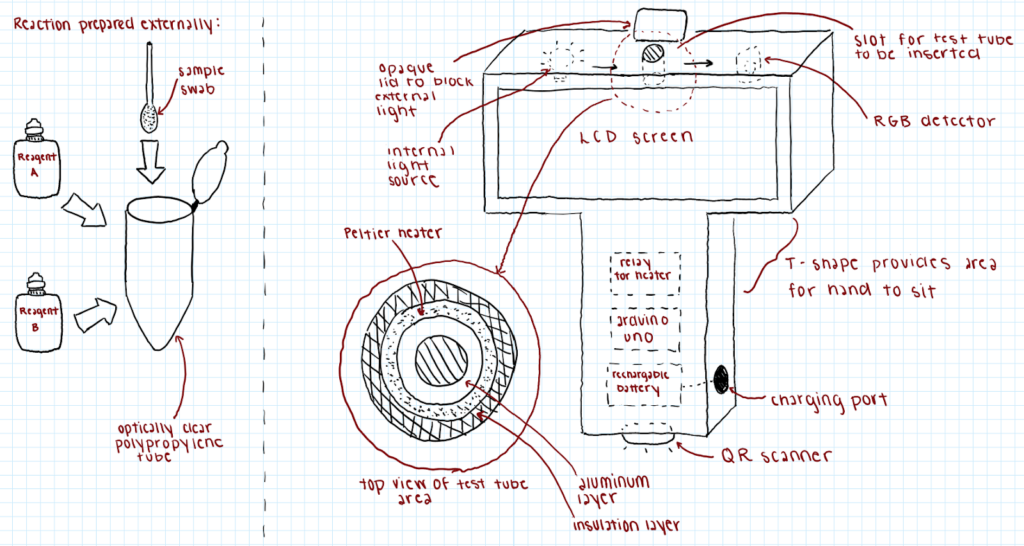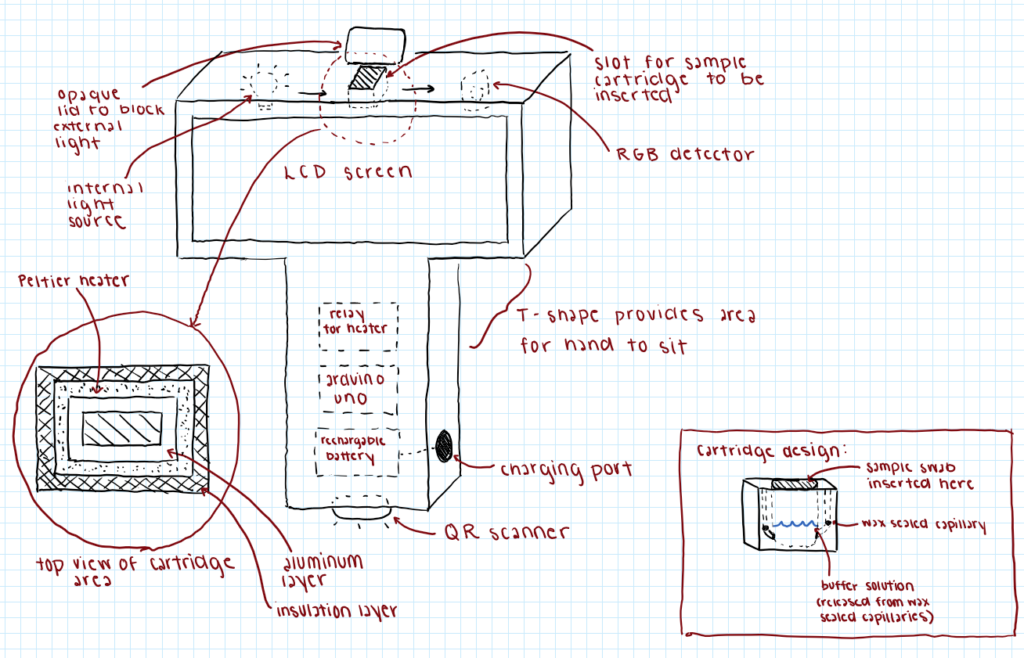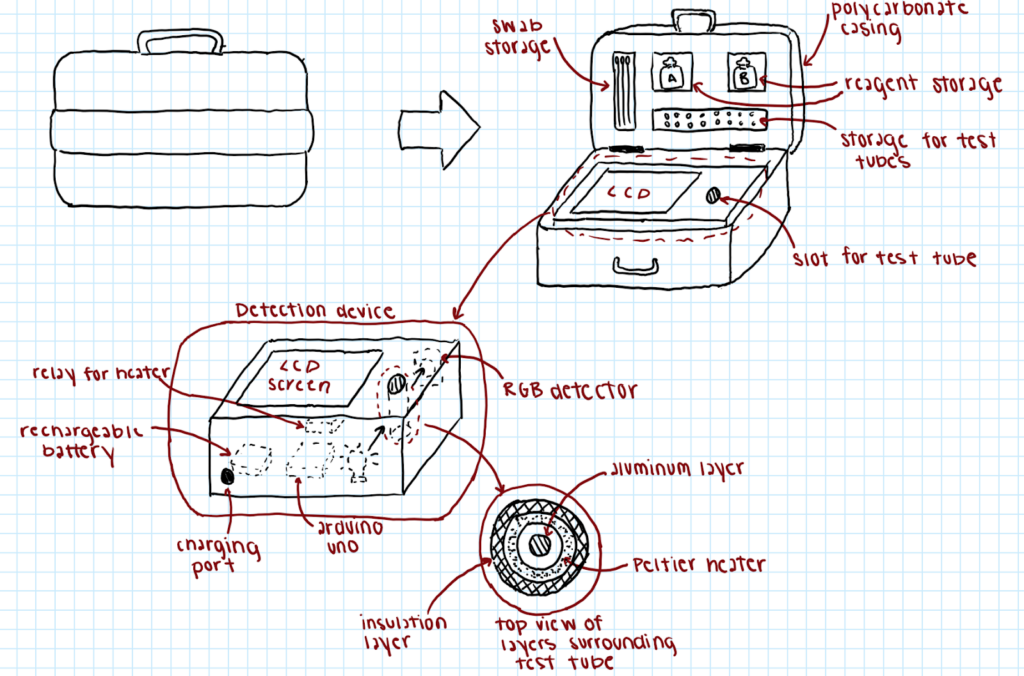Several alternative design solutions were devised that could meet the design requirements of the PG-Detect device. All of the designs have the same overall functionality outlined below:
- A swab is used to take a sample from the patient (typically nasopharyngeal)
- Swab is inserted into a saline solution to remove collected sample
- Reagents for the amplification process are added
- Device heats reaction chamber and a colorimetric detector determines color change over a specific run time
- Device outputs positive or negative result depending on color change
The following are sketches of possible design solutions:
Handheld with Test Tube Reaction Chamber

Key Features:
- Patient sample is added with reagents to a optically clear PCR tube
- User manually mixes reagents before inserting tube into device
- Ergonomic handheld design
After discussing all design solutions, this option scored the highest on a decision matrix and had the most favorable customer input. The finalized schematic of the device using this design is in progress.
Handheld with Custom Cartridge Reaction Chamber

Key Features:
- Patient sample is added to a cartridge preloaded with reagents
- Reagents are released into patient sample during heating process
- Ergonomic handheld design
Portable Compact Briefcase Design

Key Features:
- A durable polycarbonate case would contain all components needed for testing
- Utilizes a test tube reaction chamber where the user would manually setup the test outside of the device
- Analyzer is not handheld
